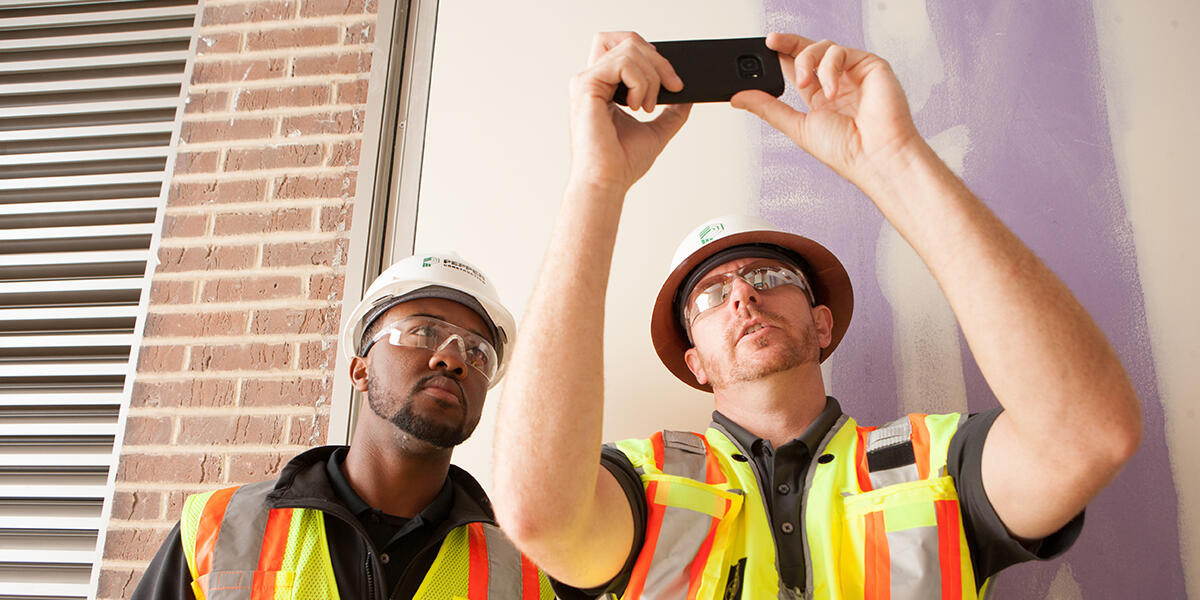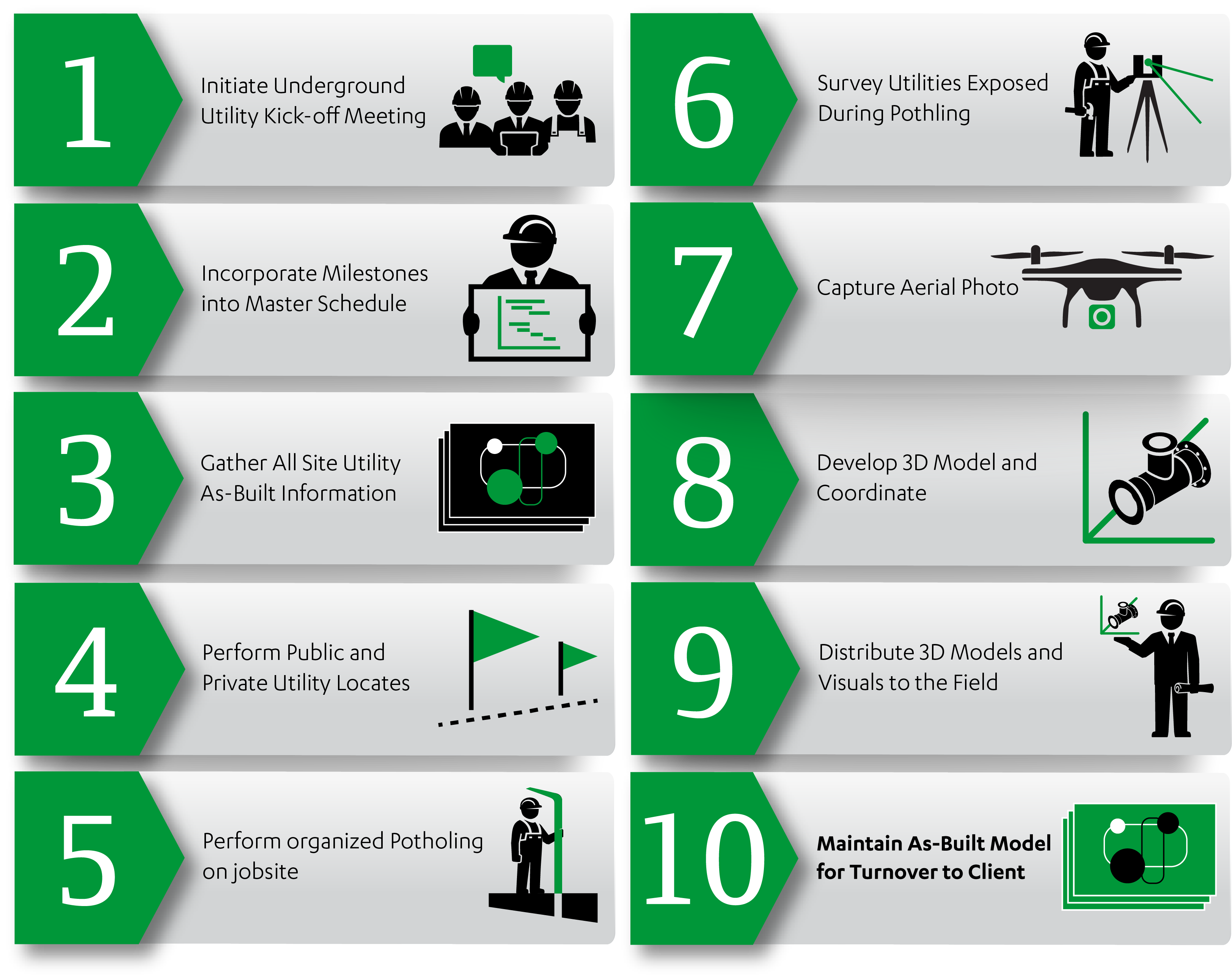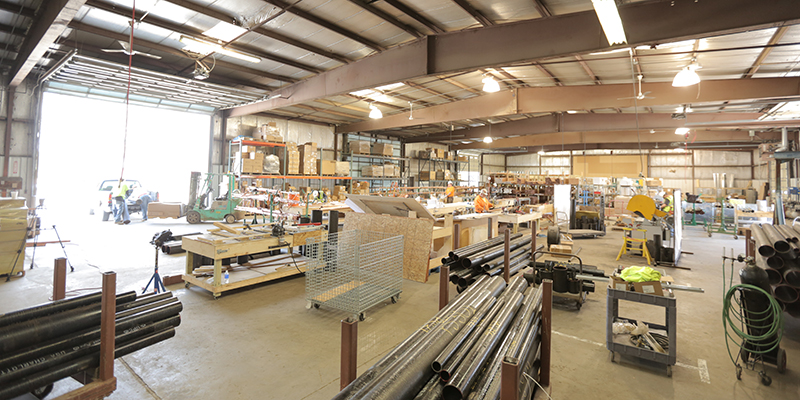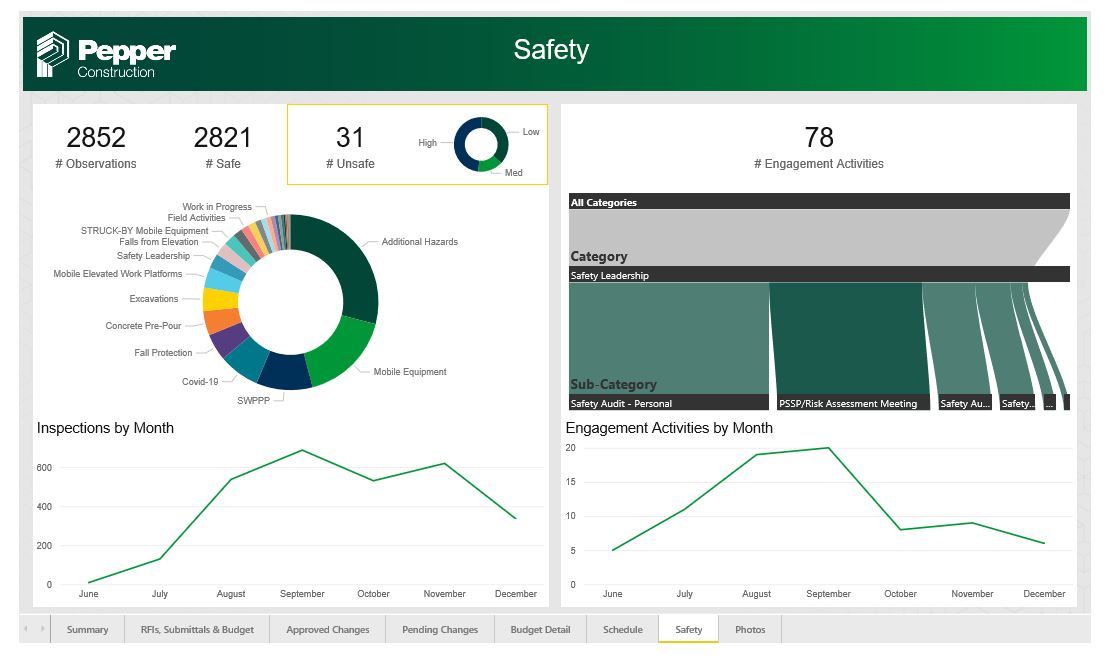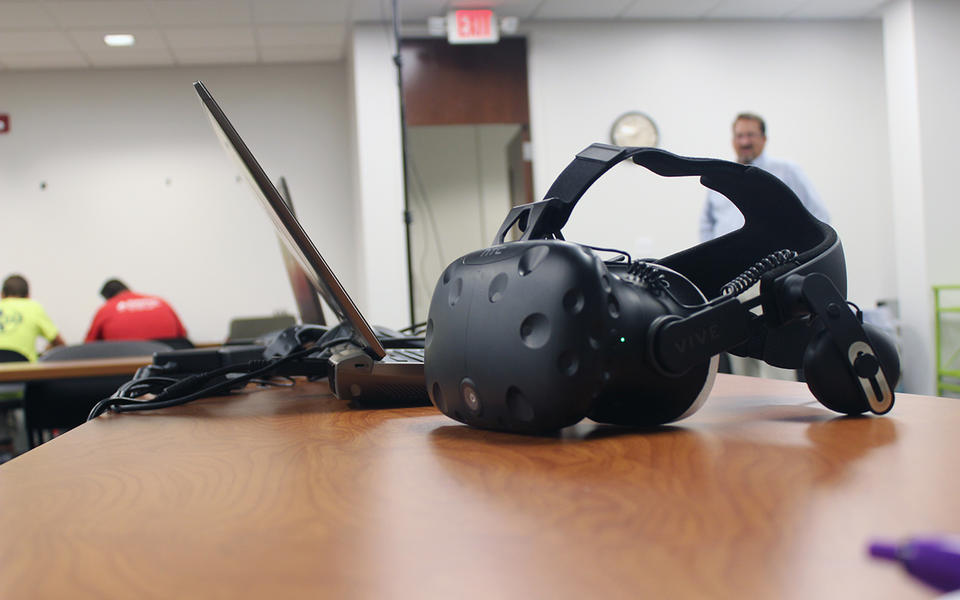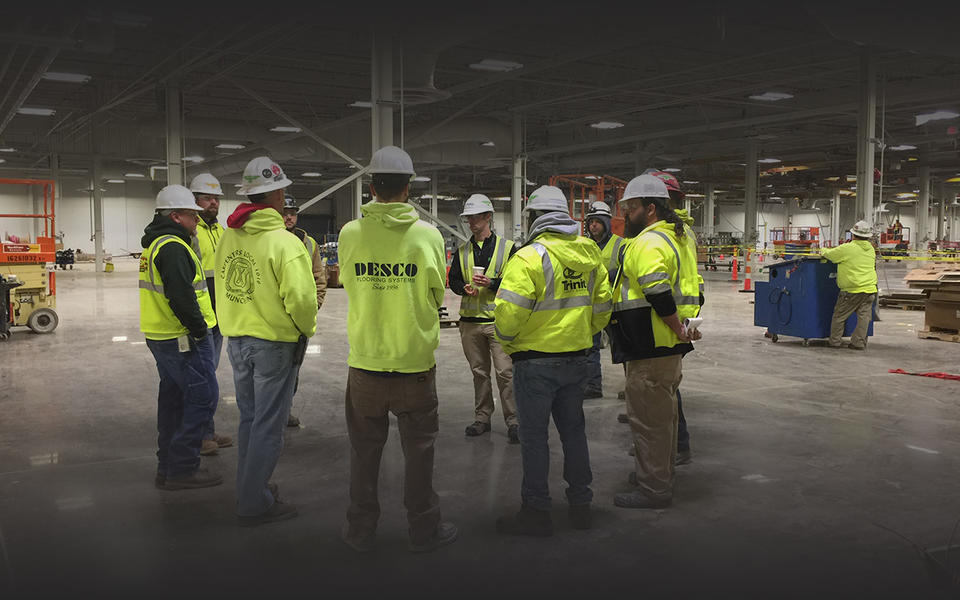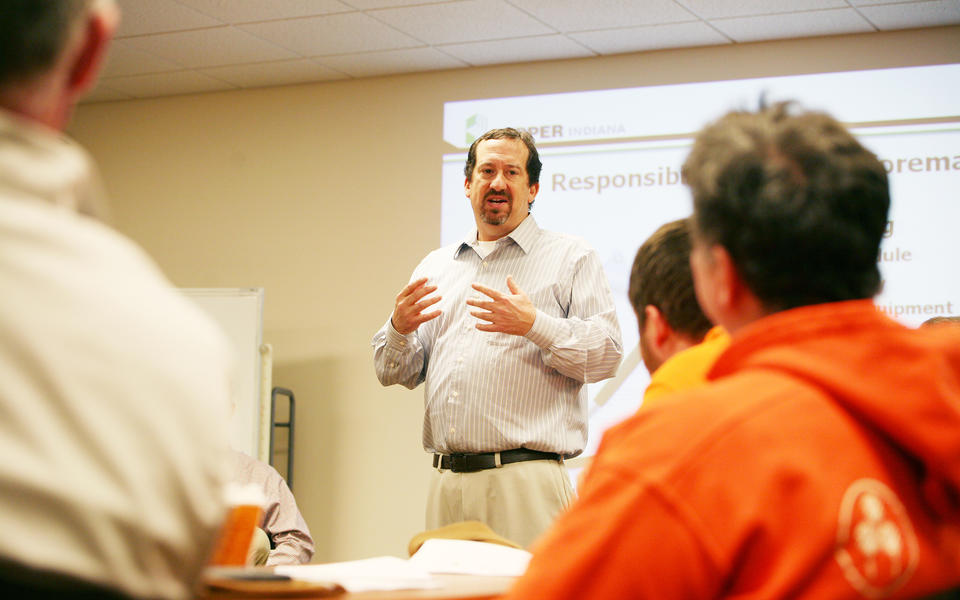Ohio 10th anniversary, Safety
This article has been updated since it was originally written in 2017.
At Pepper, we're seeing improvement in our safety statistics, and we believe it's due in part to the technology we have today that we didn't have 10 years ago. Below are 10 safety innovations from the past decade that have made a difference on our jobsites.
01. Underground Utility Damage Prevention program (UUDP)
Building Information Modeling (BIM) has made us better designers, engineers and builders, and it has also made us safer. The visualization of both 3D models and 4D schedules allow project teams to pre-plan for safety conditions and potential hazards earlier in the process. We've used the model to address a challenge that has impacted our industry for a long time. Underground utility strikes were all too common, no matter the amount of planning and safety precautions that were taken. So in collaboration with our trade partners, we leveraged BIM to develop a 10-step Underground Utility Damage Prevention process that has effectively eliminated all utility hits when the process is applied. It's been particularly helpful for campus projects and when utilities are undocumented. Learn more about UUDP.
02. Drones / Unmanned Aerial Vehicles (UAVS)
Drones provide safer inspections in highly-elevated areas, where workers would typically use a crane man-basket or scaffolding to reach. Aerial photography captured with the drones offers different vantage points in real-time, which helps address safety concerns that would have gone un-noticed otherwise. At Pepper, we have expanded our use of drones with our inhouse drone pilots, and when used in conjunction with our UUDP program, they help create a real world picture of utility marks.
03. Video conferencing
With Covid, this technology became a staple on our projects. Though video conferencing has been around for a while, the quality has improved, and it allowed our projects to proceed safely. We are able to assess concerns remotely, be available when needed and respond faster to urgent situations.
04. Training advancements
New online platforms have extended the reach of safety training across the industry and made certifications more convenient than ever. We're even able to combine an online First Aid/ CPR class with in-person training to make it more efficient and effective for the learner. Realistic gaming software is enhancing how we see construction before anyone steps onsite. At Pepper, we've partnered with MindForge to test this technology. We also partnered with our in-house virtual technology experts to create a realistic virtual reality training that allows tradespeople to experience the jobsite hazards in a safe environment before they start. The training is based on our own metrics and replicates our jobsites.
05. Touchless orientation
Safety orientations are arguably more important than ever during the pandemic, but traditional onboarding with groups of people in a trailer present health exposures. With our partners at MindForge, we've made orientations accessible for tradespeople via their smartphones. Team members simply scan QR codes posted on the jobsite to access onboarding materials and other training materials.
06. Video THAs with AI
New platforms are allowing video to be captured, catalogued and used for Task Hazard Analyses and Toolbox Talks. Centralized content in an online library allows people on different project teams across the company to view them and comment. It also incorporates artificial intelligence (AI) technology and natural language processing (NLP), which allow company leadership to analyze conversation topics and how effectively the messages are delivered. The format improves participation and empowers the tradespeople to take responsibility for their safety. The data can be used to adjust how we communicate and reframe the message to ensure it is understood. Learn more about SmartTagIt.
07. Smart phone safety apps
Apps have become as universal as cell phones, which also makes them a readily accessible safety resource to those in the field. From apps that identify chemical safety, to decibel and heat stress readers and ladder angle, workers have more information at their fingertips. At Pepper, we use a broadcast communication app for emergency preparedness and alerts for real-time communication and accountability at every level of the organization.
08. Prefabrication
Sometimes an alternative setting, like a prefabrication shop, creates a safer environment. The technology is becoming more prevalent, particularly with MEP trades. Off-site prefabrication has multiple benefits for workers and for the project. It reduces the number of trades working next to each other and the amount of construction traffic in and around the site. It also lessens the space needed for laydown areas and helps keep the site clean and free of debris. These same benefits also translate to safer conditions for the public.
09. Safety dashboards
All of the different devices, software and platforms are resulting in more metrics, with the potential to learn and improve at our fingertips. The overwhelming amount of data can be challenging to analyze, interpret and disseminate in a timely manner. Our project dashboards bring all these metrics together in one location and allow us to track and report in real time with all stakeholders - thereby providing opportunities to modify behaviors and conditions when and where it can make a difference in outcomes.
10. Smart sensors
Wearable sensors started to show up on more jobsites during the pandemic, when technology providers found ways to track social distancing. Some of the early prototypes like smart helmets and safety vests have not become mainstream. But we've seen other advancements with radio-frequency identification (RFID) technology and GPS integrate with BIM to make equipment safer to operate. Sensors address both safety and productivity, and it's only a matter of time before wearable technology also gains momentum.
One day, we hope to see the number of incidents at zero, and until then, we will continue to try new ideas that make us safer.
About the Authors



